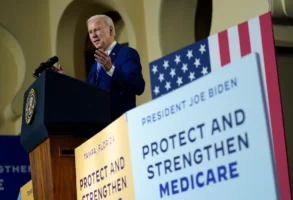
Published February 11, 2020
The annual deficit is now forecast to be roughly $1 trillion this fiscal year. That’s an astronomical amount and is especially high considering we are in the 11th year of economic expansion. Deficits typically decline as the economy booms, because government spending on transfer programs drops and taxes rise with increased employment. The fact this is not happening means the deficit will skyrocket to record levels whenever the economy tips into recession, as it inevitably will.
Trump’s approach to reducing the deficit is to starve domestic programs and trim everything else. His budget would slash the amount spent on domestic discretionary programs by about a third by fiscal year 2030, reducing such spending as measured as a share of the gross domestic product by nearly half to a mere 1.6 percent. He would also cut Medicaid by nearly 20 percent in 10 years and reduce other mandatory program spending by about 12 percent. Try to imagine the Democratic Party going along with that.
Click here to read the rest of this piece at the Washington Post’s website.
Henry Olsen is a senior fellow at the Ethics and Public Policy Center.







